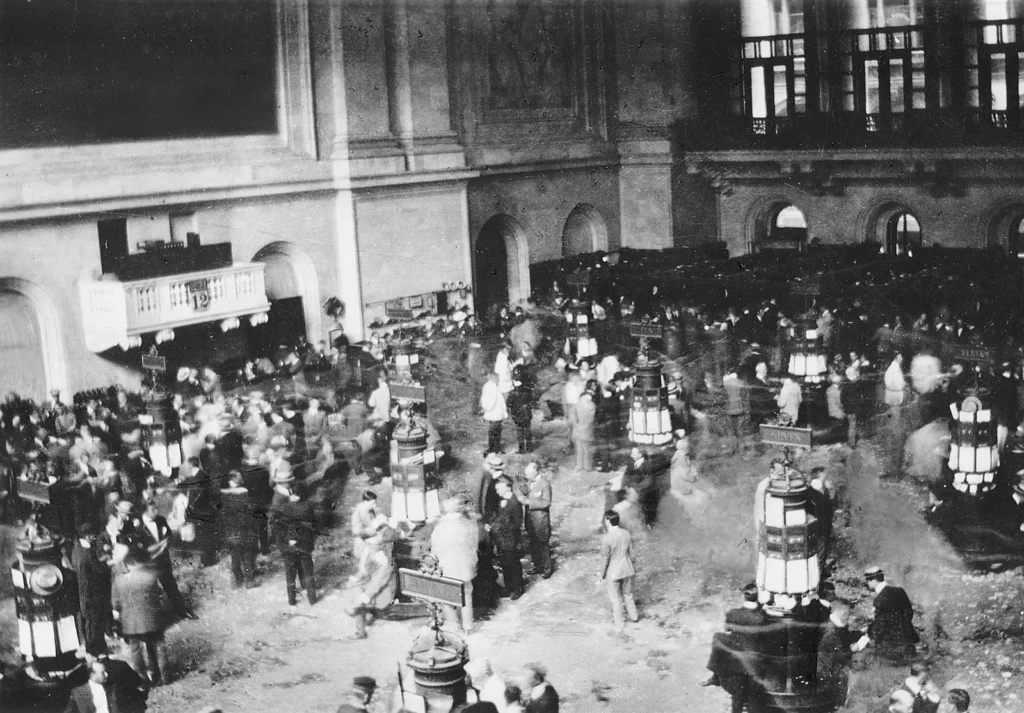

Barton Biggs is a name synonymous with Wall Street legend. What adds an intriguing layer to Biggs’ story is his family legacy. His father held the prestigious position of Chief Investment Officer at the Bank of New York, a role he dedicated himself to from 1931 until his passing in 1974. So, Barton learned a few things about investing way before any of his peers could.
With “The History of Investment Strategies”, Barton Biggs initially promised readers a glimpse into complex investment strategies interwoven with the backdrop of World War II. However, the actual content of the book takes a different turn. Rather than focusing on investment secrets, readers are taken on an unexpected journey into history. Let’s investigate together and free up your time for actual trading on Binomo.
The book’s promise vs. reality

Instead of a profound exploration of modern investment secrets, “The History of Investment Strategies” takes readers on an unexpected detour into the annals of history. The author does touch upon investment strategies. However, they are consistently overshadowed by an extensive narrative focused on wartime military operations and the lives of historical figures. In essence, the book diverges a lot from its advertised premise and reportedly leaves readers feeling shortchanged.
Well, truth be told, the author’s exploration of gold and real estate as conservative investment methods, particularly during times of crisis, holds merit. However, these valuable insights are interspersed with a rather weird narrative.
A bit of praise
Biggs argues that having investment skills isn’t enough — you also need the historical context. One will have to agree with this point.
One reviewer mentions that the book is filled with stories of families trying to protect their wealth during turbulent times. However, the reviewer also pointed out that the author’s personal biases and opinions about historical figures, nations, and peoples might be offensive to some readers (more on that later). Nevertheless, if you set aside these subjective views and concentrate on the economic insights, some think there is still thought-provoking material.
Another reviewer found the sections discussing the shifts in the world economy during the 1930s to be particularly intriguing.
The book was also praised for its clear and structured presentation. According to a user, it doesn’t contain filler material and instead focuses on the safety and potential of various assets, including real estate, land holdings, works of art, shares, gold, and more. However, it’s essential to acknowledge that not everyone shares this view.

Criticisms and controversies

One of the most scathing criticisms leveled at “The History of Investment Strategies” is that the book simply doesn’t deliver on its seemingly enticing title. Readers could not get a deep dive into investment strategies because the book spends a paltry 20 pages, at best, on the subject matter. In a sad turn of events, the majority of its pages are dedicated to recounting military operations and historical anecdotes.
Many readers feel that the time, money, and effort put into this book has been squandered. They argue that the excessive and often irrelevant details about wartime events, such as hangings and personal relationships, add little value to the core theme of investment strategies.
Even more damning are the inaccuracies that litter the book. Critics point out that errors are particularly concentrated in the first five and last fifty pages, which severely undermined the book’s overall credibility. It’s hard to take investment advice seriously from a source that appears to struggle with historical accuracy.
Key takeaways
Barton Biggs’ “The History of Investment Strategies” boils down to a simple idea: in times of war, financial markets react to what’s happening on the battlefronts. The author encourages readers to focus on diversification as a strategy to navigate financial crises in our unpredictable world. This book also prompts readers to think about the fine line between safeguarding wealth and seizing investment chances during turbulent times.
But! Biggs’ unorthodox view of history might not align with everyone’s expectations. He thought he was challenging conventional thinking, but he ended up misinterpreting both the facts and the perspective.
You may as well skip this read in favor of something more well-acclaimed like The Intelligent Investor, Beating the Street, and The Downfall of Money. These books are much better if you want to elevate your trading skills and apply valuable knowledge on Binomo.
Sources:
Who is Barton Biggs? Portrait of the strategist as a global bear, The New York Times
The gospel according to Barton Biggs, TheStreet








